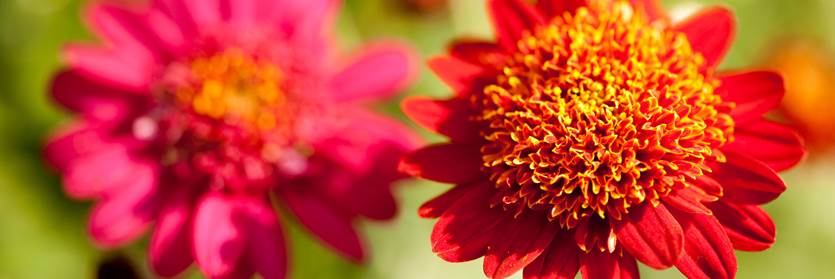‘Tulipomania’
Posted in Gardening Tips on April 12 2011, by Sonia Uyterhoeven
 |
Sonia Uyterhoeven is Gardener for Public Education. |
 The tulip has been immortalized for centuries in many ways. Recently it was celebrated as a symbol of beauty and intrigue in Michael Pollan’s Botany of Desire. Pollan chronicles the history of a flower that has seduce people throughout time and through its beauty has lead them to exalt; to speculate and squander; to make careers out of hybridizing – searching for the latest sensation in color, form and beauty. These efforts have brought the tulip from the obscurity of high mountain ranges in central Asia into the world market.
The tulip has been immortalized for centuries in many ways. Recently it was celebrated as a symbol of beauty and intrigue in Michael Pollan’s Botany of Desire. Pollan chronicles the history of a flower that has seduce people throughout time and through its beauty has lead them to exalt; to speculate and squander; to make careers out of hybridizing – searching for the latest sensation in color, form and beauty. These efforts have brought the tulip from the obscurity of high mountain ranges in central Asia into the world market.
Like many bulbs, tulips are planted in the fall. They are neatly tucked 6-8 inches in the ground in areas with good drainage and full sun. The bulbs put out roots in the fall and then sit there waiting until the snow melts and the temperatures in the spring warms before they shoot up and flower early in the spring.
Now is the season to start thinking about doing your window shopping – going around to different gardens and parks to see what the myriad of colorful cultivars from bulb catalogs look like in person.
As you admire these cheerful harbingers of spring take a look at their form, their height, their color. Stick your nose close to the blossom – some are fragrant – many are not. Many tulips change their color as they age. Many change their color with the light and have a translucent quality to them.
Tulips generally only last for a few years in the New York climate and are generally used as annuals. They are often used in large springtime annual displays – planted en masse in the fall and ripped out in the spring – ending up in the compost pile.
Many homeowners do not want to devote an entire area in their garden to a labor intensive display. Rather, they would like to incorporate them into their pre-existing perennials borders and foundation plantings. Last fall we had two experts from Holland come over and discuss bulbs that performed well for a number of years and were good candidates for perennial plantings.
Some of the tulips that were recommended by the International Flower Bulb Centre were:
‘Ad Rem’, ‘Ballade’, ‘Ballerina’, ‘Cape Cod’, ‘Couleur Cardinal’, ‘Flaming Purissima’, ‘Golden Apeldoorn’, ‘Maureen’, ‘Menton’, ‘Negrita’, ‘Parade’, ‘Peer Gynt’, ‘Queen of the Night’, ‘Shirley’ ‘Showwinner’, ‘Spring Green’, ‘Spring Song’, ‘Toronto’, ‘Tres Chic’, ‘West Point’ and ‘White Triumphator’. There are many more tulips that perennialize well and experimentation is always encouraged.
So how long do they last in your garden? Well, in ideal conditions in Holland many of these tulips were thriving 10-15 years later. In the New York area I would not set my hopes so high and would plan for 4 to 7 years before you are planting some new bulbs.
Some tips for helping your tulips to keep coming back every spring is to fertilize them early in the spring with either a slow-release fertilizer or organic matter such as aged cow manure just as the leaves start to poke up above the ground. Plant them in areas with good drainage and plant them slightly deeper than normal – around 8 inches deep. Once the blooms have faded remember to deadhead your flowers by snapping off the seed head. The more foliage that you leave on the more the plant will be able to photosynthesize pouring energy into the bulb for next year’s flower.
Some good perennial companions for tulips are lady’s mantle (Alchemilla mollis), hardy geraniums (Geranium), blue star (Amsonia), phlox (Phlox paniculata), bugleweed (Ajuga), Siberian bugloss (Brunnera), avens (Geum), and bugbane (Actaea).
